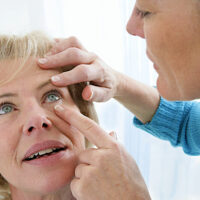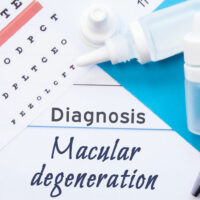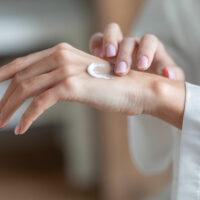11 bad habits to break for healthy skin

The skin, as the body’s largest organ, plays a vital role in protecting against external elements and regulating internal temperature. So, maintaining skin health is a key part of overall well-being, and it requires mindful and consistent care. However, a few daily habits can have a negative effect on the skin’s appearance and function. By recognizing the following unhealthy practices and adopting a proactive approach to break these habits, one can get radiant, resilient skin.
1. Inadequate sun protection
Excessive sun exposure without proper protection poses a threat to skin health. Prolonged exposure to harmful UV rays can lead to a range of issues, including premature aging, sunburns, and a higher risk of skin cancer. To prevent sun damage, one should wear sunscreen, protective clothing like wide-brimmed hats, and sunglasses while stepping outdoors. Further, the threat of UV rays is not limited to sunny days, as they can penetrate clouds and even windows, making sun protection a year-round necessity.
2. Poor hydration
Adequate hydration is a key step toward healthy skin. When the body is dehydrated, the skin’s ability to retain moisture diminishes, leading to dryness, flakiness, and a dull appearance. Additionally, dehydrated skin is more prone to irritation and inflammation, making it more susceptible to conditions like eczema and dermatitis. Beyond drinking an adequate amount of water, incorporating hydrating serums or moisturizers into the skincare routine can provide an additional boost of hydration for the skin.
3. Neglecting skincare
The importance of a consistent skincare routine cannot be overstated. Neglecting to cleanse, exfoliate, and moisturize regularly can lead to clogged pores, uneven texture, and a lackluster complexion. Additionally, harsh or incompatible skincare products can exacerbate skin problems, potentially causing redness, dryness, or even breakouts. So, one should follow a skincare routine suited to their skin type to get the most out of the products. Additionally, consistency is the key here, as it allows the skin to benefit from the intended effects of each product.
4. Poor nutritional choices
Unhealthy eating habits, like choosing foods high in processed sugars and unhealthy fats, can harm skin health. Such foods can lead to inflammation, a common precursor to skin conditions like acne and eczema. Moreover, foods lacking essential vitamins and nutrients can compromise the skin’s ability to repair and regenerate. Further, excessive intake of sugary or high-glycemic foods can lead to insulin spikes, contributing to increased oil production and acne breakouts. Here, opting for a balanced meal plan rich in fruits, vegetables, lean proteins, and whole grains provides the skin with the nutrients it needs.
5. Not getting enough sleep
Insufficient sleep disrupts the body’s natural rejuvenation processes, which are crucial for healthy skin. Further, chronic sleep deprivation can lead to dark circles, puffiness, and a generally dull appearance. Lack of sleep can also exacerbate existing skin issues and hinder the skin’s ability to repair itself. Finally, elevated stress hormones due to lack of rest can lead to increased oil production, potentially contributing to acne breakouts. So, following a strict sleep schedule and creating a calming bedtime routine can help improve the quality and duration of sleep, benefiting both overall health and skin appearance.
6. Not managing stress
Chronic stress and anxiety can take a toll on skin health. Elevated stress levels trigger the release of hormones like cortisol, which can lead to increased oil production, acne breakouts, and a compromised skin barrier. Additionally, stress-induced habits like excessive face touching or nail biting can worsen skin problems. Here, adopting relaxation practices like meditation, deep breathing exercises, or engaging in relaxing activities can lower stress. Further, seeking support from mental health professionals can be beneficial in managing stress and anxiety.
7. Ignoring moles and skin changes
Moles that seem to have changed in color, size, or shape are known signs of skin cancer. So, regularly checking moles and seeking professional evaluation upon noticing any changes is essential for early detection and treatment. Here, performing monthly self-examinations and consulting a dermatologist to examine any concerning changes can enable early detection of skin cancer.
8. Exfoliating flaky skin
Scratching or rubbing flaky skin can worsen dryness and irritation and disrupt the skin’s natural barrier, leading to further moisture loss and inflammation. Additionally, such aggressive exfoliation can cause micro-tears in the skin, increasing the risk of infection and delayed healing. Alternatively, one should opt for gentle exfoliation with a mild exfoliant to remove dead skin cells and follow it up with a hydrating moisturizer to lock in moisture and soothe the skin.
9. Picking at the skin
Picking at scabs or acne can lead to scarring, infection, and delayed healing. It can also spread bacteria, causing additional breakouts. Additionally, the pressure applied during picking can damage the surrounding healthy skin, potentially leading to further inflammation. Seeking appropriate treatment after consulting a dermatologist can help with acne management by addressing the underlying causes without causing further harm to the skin.
10. Rubbing the eyes
Upon experiencing itching in the eyes, frequently rubbing them can worsen the irritation and damage the delicate skin around the eyes. It can also exacerbate under-eye puffiness and dark circles. The skin around the eyes is fragile and sensitive, making it more susceptible to damage from repetitive or vigorous rubbing. Alternatively, one can use a cool compress or gentle patting motions to soothe the eyes. Additionally, ensuring that eye makeup is removed gently and thoroughly can help prevent unnecessary friction on the delicate under-eye skin.
11. Touching the face with unwashed hands
Using dirty hands to pick at the skin can introduce bacteria and dirt to the skin, potentially leading to breakouts and irritation. The hands come into contact with numerous surfaces throughout the day, accumulating various microorganisms that can be transferred to the face upon contact. So, regularly washing hands with soap and water can help one maintain skin hygiene. Additionally, when stepping outside, carrying hand sanitizer can help minimize the risk of introducing harmful bacteria to the face.





